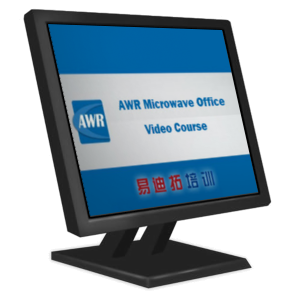- 易迪拓培训,专注于微波、射频、天线设计工程师的培养
Time Domain Reflectometry Simulation with AWR
I have to make a TDR simulation with AWR locating faults on coaxial cable.
AWR can make some TDR measuments but they are using frequency domain technique like a network analyzer.
I have to make a real TDR measurement simulation with a voltage step and in time response.
If you know how to do it, please help me..
Thanks in advance!
I connected pulse generator to a coaxial transmission line element. I need to see the reflection trace from cable. How can i see it?
Finally i realized the circuit and could see the reflection.First trace show the incident pulses and second trace the reflected pulses. Time delay between inciden and reflected pulsees give the length of cable. But i want to see only one incident and reflected pulse. How can get that?
ImageShack® - Online Photo and Video Hosting
I realized TDR simulation on AWR. But i have a question. There are lots of coax transmisslion line elements in AWR. If i realized my simulation with COAXP2 or COAXI2
the reflected pulse changes in his voltage value although with same attenuation value in configuration. Why does the difference occur?
TDR with COAXP2:
ImageShack? - Online Photo and Video Hosting
ImageShack? - Online Photo and Video Hosting
TDR with COAXI2:
ImageShack? - Online Photo and Video Hosting
ImageShack? - Online Photo and Video Hosting
Please help me. What is the difference between this coax elements? With same loss value they attenuate different
Hello CMD,
I think that the TDR with COAXP2 is the correct one as it uses your exact physical dimensions(Do, Di) to calculate the characteristic impedance....
(Di, Do. Inner and outer diameters and dielectric constant K are used to evaluate characteristic impedance Zo as Zo = 138/sqrt(K)*log(Do/Di)).
Where as the COAXI2 which you used the ideal value of 50 ohm, which may not be exactly same to to different dimensions...
This may be the only reason to get different results...
Thank you for your reply Manjunatha_hv,
I think that c.impedance make differences only about the magnitude of reflection but not that huge difference.
The values that i gave to COAXP2 are: Di: 0.9mm, Do:2.95mm, L:25m, K:2.295(dielectric), A:0.177 dB/m , F:100MHz
The values that i gave to COAXI2 are: Z:50, L:25m, K:2.295(dielectric), A:0.177 dB/m , F:100MHz
Characteristic impedance of COAXP2 is calculated as 46.965 ohm
I send a short pulse at 1MZ frequency with 2V magnitude and the magnitude of COAXP2 reflection is 0.1012 V and of COAXI2 is 0.9697 V for 25 m RG58 coaxial cable.
The thing i can't get with same "A" value how do i become different results. Which attenuation is more similar to reality
AWR Microwave Office 培训课程套装,视频教学,帮助您快速学习掌握MWO...
上一篇:Microwave Office specified tones must be contiguous starting from one error
下一篇:I need 32 Mbps 2.4 GHz QPSK/BPSK/8PSK Data in AWR Microwave Office

